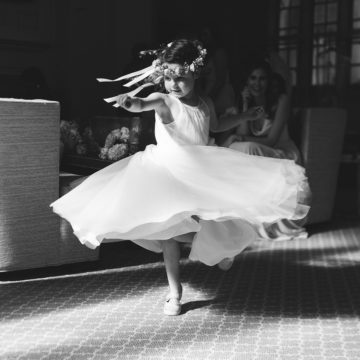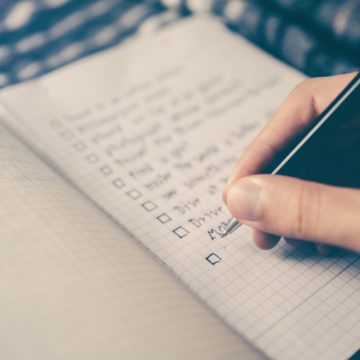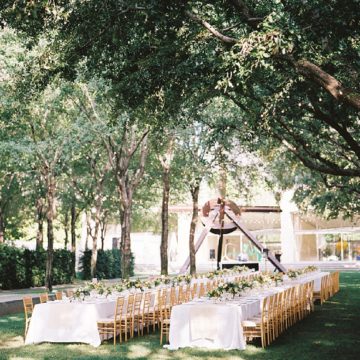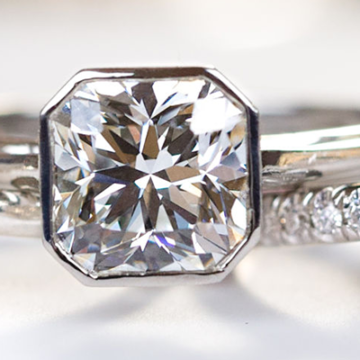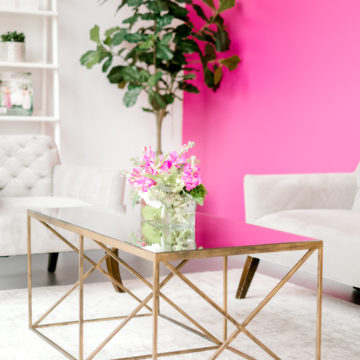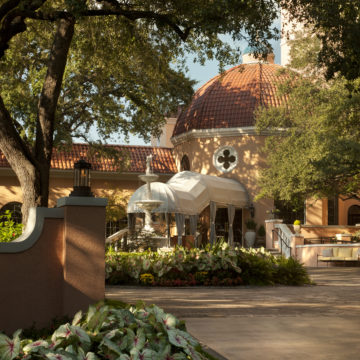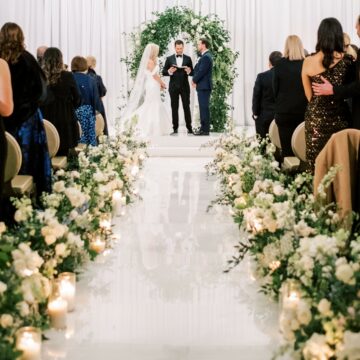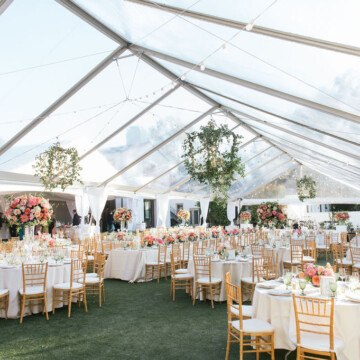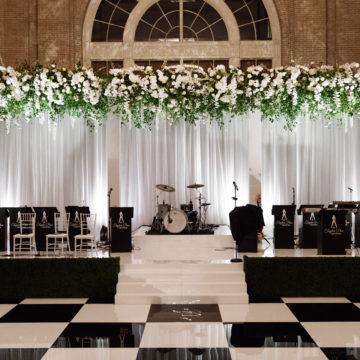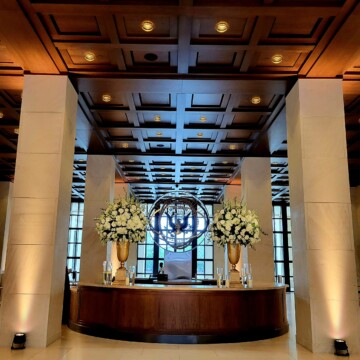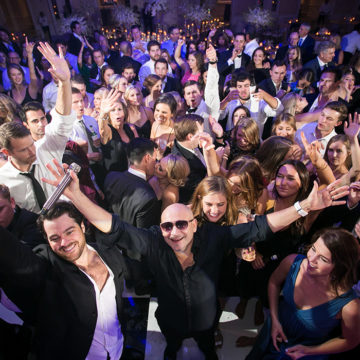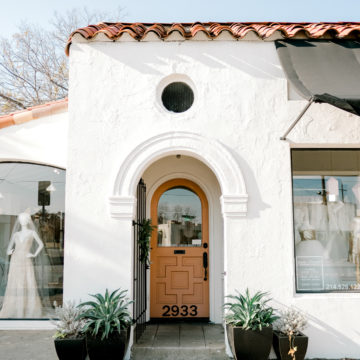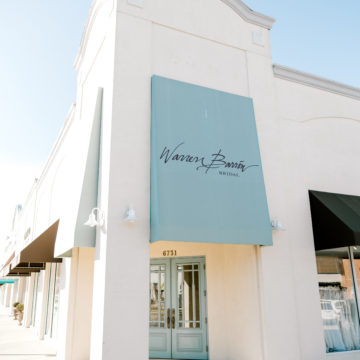
As the old adage says: You never get a second chance to make a first impression. And when it comes to your wedding, your invitations are the first glimpse your guests will get of what’s to come. But creating a sweet suite doesn’t have to mean breaking the bank. Southern Fried Paper’s Chelsea Carpenter explains the many factors that impacted the price of these similar (and stunning!) invitation suites.
$4,500–$6,000 for 100 quantity
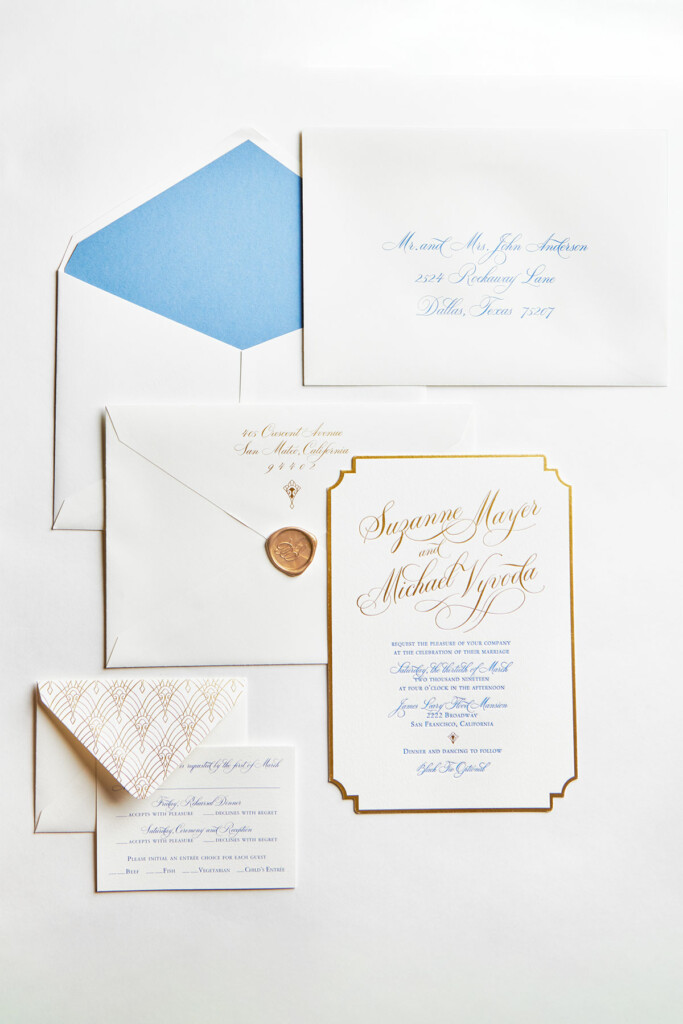
-
Seal of Approval
Want the look of a wax seal without the price tag? Wax seal stickers—which are made from real wax but have an adhesive backing—save money without sacrificing style. Says Chelsea: “We did a test in the studio once to see who could tell the difference, and most people got it wrong.”
-
Signed, Sealed, Delivered
Using a standard-sized and -shaped envelope is easier on your budget. Adding a liner is an upgrade, but choosing one that’s flat-printed or solid-colored is a cost-effective way to add oomph. Rather than incur the cost of hand-calligraphed envelopes, you can also opt to print recipient and return addresses digitally, as this client did.
-
Going for Two
The two-ply paper used for this invitation is sturdy enough for letterpress printing but half the thickness—read: less expensive—than the four-ply paper used in the higher-priced option.
-
The Shape of Things
Far more interesting than a standard rectangle, this ornate shape is achieved using a die-cut process (similar to using a cookie cutter), which is less costly than intricate laser-cutting techniques.
-
The Midas Touch
At first glance, the gold edges of this suite look similar to that of the higher-priced option. But while the other is beveled and painted, this suite mimics the look with a printed border. TIP: If you’re already using foil elsewhere on the invite, adding a foil border doesn’t add to the bottom line. “It’s all on the same printing plate, so we’re not adding a process,” Chelsea explains.
-
Only the Essentials
Having fewer inserts means reduced paper, printing, labor, and postage costs.
-
Fit To Print
This invitation was created using letterpress and gold foil, two printing processes that—while more expensive than flat printing—are significantly less than engraving, yet still provide a metallic shine. The insert cards were flat printed for additional cost savings. “If you’re looking to save somewhere, I usually recommend doing it in the reply card and reply envelope, since guests don’t keep that and won’t remember how they were printed,” Chelsea says.
CONSIDER THIS: While strategically varying your printing processes is fairly common, Chelsea warns of a potential downside: “There’s a chance the ink won’t match exactly across your paper goods, because they’re different processes.”
$10,000–$12,000 for 100 quantity

-
Outward Appearances
Custom touches come at a price. In this case, an oversized cardstock envelope was created specifically for this suite—providing a visual impact that’s well worth the investment.
-
You’ve Got Mail
Not only is extra postage required to mail envelopes of especially large size and unusual shape, the vertical orientation, thickness (and resulting rigidity), and weight (caused by so many inserts and heavy paper ply) of this suite mean it must be hand-canceled by the post office, bringing the total cost to mail it to around $5 apiece.
-
Great Impressions
This suite employed two high-priced printing processes—sculpted blind emboss (used to achieve the dimensional duogram) and engraving (the most traditional and formal method of printing). “Some people just really value traditional printing processes and put a lot of emphasis on the invitation because they know it’s something that people will keep and cherish,” Chelsea says.
-
Extra, Extra
A wax-seal-secured ribbon, like the one used here, has to be hand-stamped twice—first with a blank seal to create an even base, then with the insignia. In addition to materials, you’re paying for labor. Remarks Chelsea: “It’s so time-intensive.”
-
Think Thick
The four-ply paper used in this invitation—the thickness of which allowed for the luxe beveled edge—is achieved by adhering two pieces of two-ply paper together. “So the paper cost alone is twice as expensive [as the budget 1 option] because it’s twice as much paper,” Chelsea notes.
-
Pen to Paper
Rather than use a standard digital font, the lettering in this suite was hand-calligraphed by The Left Handed Calligrapher, Nicole Black. In the case of the invitations, that doesn’t mean each piece is hand-written: “The calligrapher writes it out once, and we make a printing plate from that,” Chelsea explains. But the envelope addressing for this suite was also hand-calligraphed, which must be done one by one. The calligrapher’s time and talent adds to the cost.
-
A Numbers Game
That ballooning guest list isn’t just adding to the catering budget. “If you’re mailing 500 invitations, it’s obviously going to be more expensive than if you’re only mailing 50,” says Chelsea.
REMEMBER! When budgeting for invitations, make sure you’re counting correctly. Says Chelsea: “It’s per household, not per person.”
